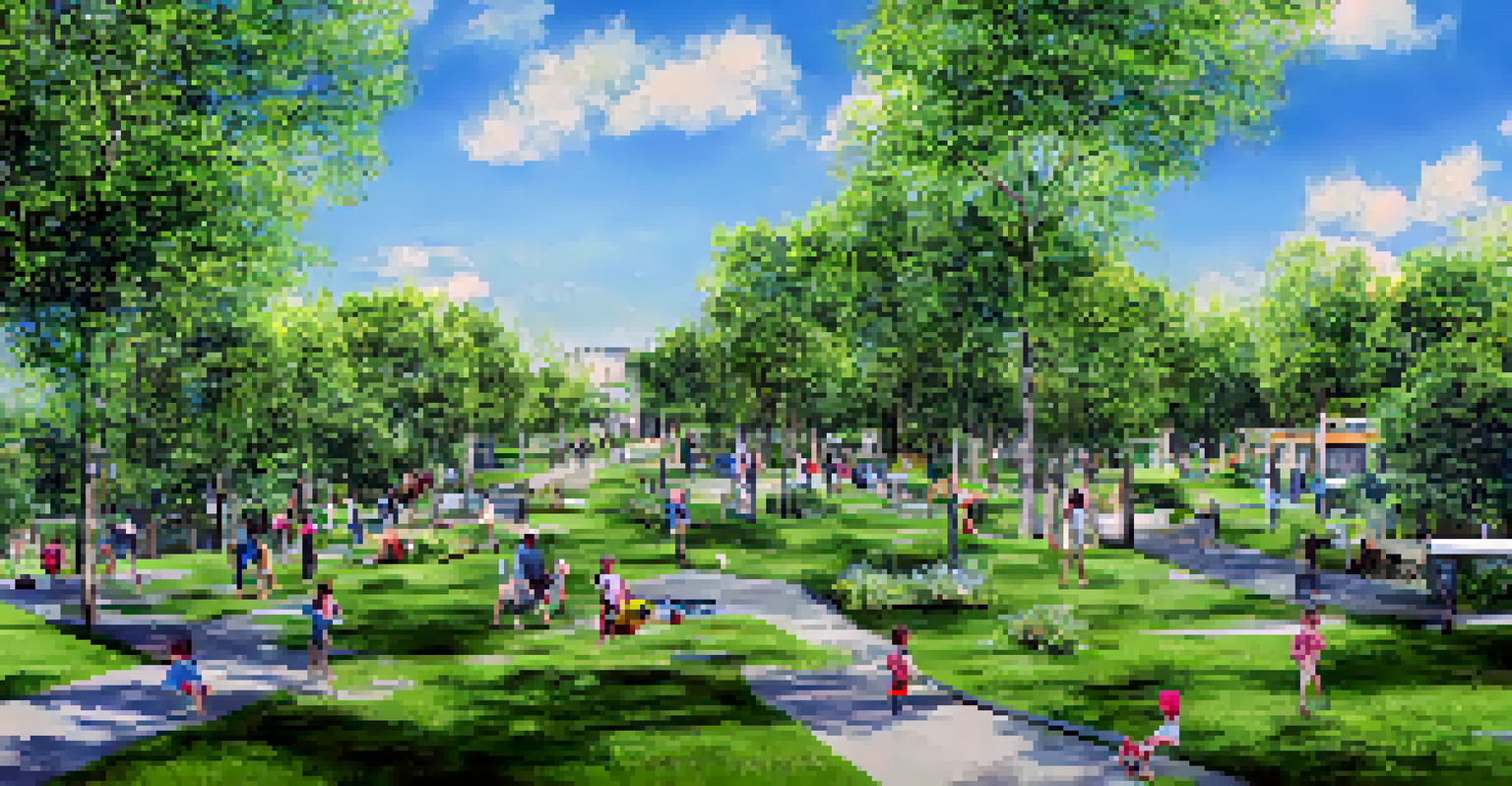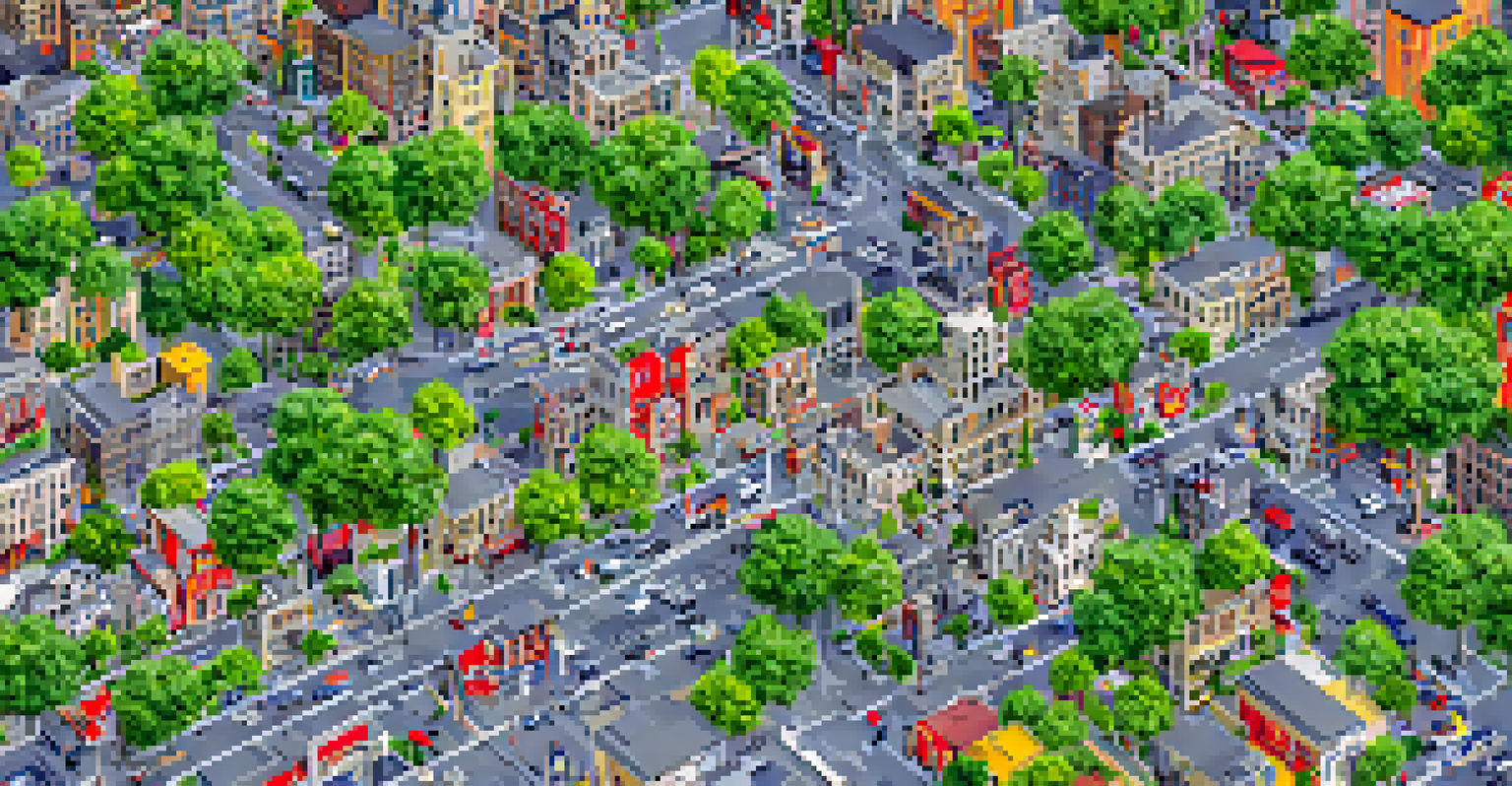The Role of Urbanization in Shaping Real Estate Market Trends

Understanding Urbanization and Its Impact
Urbanization refers to the increasing population in urban areas, transforming them into bustling hubs of activity. This phenomenon is driven by people seeking better job opportunities, education, and quality of life. As cities expand, they become central to economic growth, influencing various sectors, including real estate.
Urbanization is not just a demographic trend; it is a transformative force that shapes our cities and our lives.
When we think of urbanization, we often picture skyscrapers and crowded streets, but it also brings changes to community dynamics and infrastructure. For instance, as more people move to cities, demand for housing increases, leading to the development of new residential areas. This shift not only affects housing prices but also shapes the types of properties that are built.
Additionally, urbanization encourages improvements in public amenities, such as transportation and parks, making urban living more appealing. These enhancements can lead to higher property values in well-developed neighborhoods, illustrating how urbanization directly influences real estate market trends.
The Demand for Housing: A Direct Result of Urban Growth
As cities grow, the demand for housing skyrockets, which is a crucial factor in real estate trends. More people moving into urban areas means that developers must respond quickly to meet this increased need. This often leads to a surge in new housing projects, which can range from high-rise apartments to suburban communities.

For example, in cities like New York and San Francisco, we’ve seen a boom in luxury apartments catering to affluent buyers, while other areas focus on affordable housing options. This diversification of housing types reflects the varied needs of urban populations, making the real estate market dynamic and complex.
Urban Growth Drives Housing Demand
As cities expand, the demand for diverse housing options surges, influencing real estate trends and pricing.
Moreover, the rush for housing often drives prices up, creating competitive markets where buyers must act fast. This phenomenon can lead to bidding wars, further escalating home prices and altering the landscape of urban real estate.
The Role of Technology in Urban Real Estate Development
Technology continually reshapes how urban areas develop and, consequently, how the real estate market operates. From smart home features to the use of artificial intelligence in property management, technological advancements enhance both living experiences and investment opportunities. These innovations attract tech-savvy buyers and renters, influencing market trends.
The future of our cities will be defined by how we embrace technology and sustainability in real estate development.
For instance, cities are increasingly incorporating smart technologies into their infrastructure, making urban living more efficient. Think of smart traffic systems that reduce congestion or energy-efficient buildings that lower utility costs. Such developments appeal to environmentally conscious consumers, further shaping demand in the real estate market.
Additionally, online platforms have revolutionized how properties are bought and sold. With virtual tours and instant access to market data, buyers can make informed decisions from the comfort of their homes, speeding up transactions and influencing market dynamics.
Urbanization and Its Effect on Commercial Real Estate
Urbanization doesn't just impact residential real estate; it significantly affects commercial properties as well. As cities grow, businesses follow suit, leading to an increased demand for office spaces, retail stores, and service-oriented establishments. This trend highlights the interconnectedness of urban development and commercial real estate.
For example, tech companies often seek out urban locations for their offices to attract talent that prefers city living. This demand drives up the prices of commercial spaces in central business districts, influencing investment strategies for real estate developers.
Technology Shapes Real Estate Dynamics
Advancements in technology improve urban living and streamline property transactions, attracting modern buyers.
Moreover, as more people live and work in urban areas, neighborhoods are transformed. An influx of restaurants, cafes, and shops creates vibrant communities, which further enhances the appeal of commercial properties and can lead to increased foot traffic, benefiting local businesses.
The Shift Towards Sustainable Urban Development
Sustainability is becoming a key focus in urban planning and real estate development. As urban populations grow, the emphasis on creating eco-friendly spaces that minimize environmental impact has gained traction. This shift not only reflects societal values but also influences market trends, as buyers increasingly prioritize sustainability.
For instance, new developments are often designed with green building practices in mind, utilizing energy-efficient materials and technologies. These eco-friendly properties can command higher prices in the market, appealing to environmentally-conscious consumers who are willing to invest in sustainable living.
Additionally, cities are implementing policies that promote sustainable practices, such as zoning laws that encourage mixed-use developments. This approach not only supports economic growth but also fosters community engagement, making urban areas more livable and attractive to potential buyers.
The Influence of Government Policies on Urban Real Estate
Government policies play a crucial role in shaping urban real estate markets. From zoning laws to tax incentives, these regulations can encourage or hinder development in urban areas. Understanding this relationship is vital for investors and homebuyers alike, as it directly impacts property values and availability.
For example, when local governments implement policies that promote affordable housing, it can lead to increased construction and revitalization of neighborhoods. This can attract new residents and businesses, ultimately boosting the local economy and enhancing property values.
Sustainability Guides Urban Development
The focus on eco-friendly practices in urban planning is reshaping the real estate market as buyers prioritize sustainability.
Conversely, strict zoning laws or high taxes can discourage development, leading to stagnant markets. It’s essential for stakeholders to stay informed about local policies and their potential impacts on real estate trends to make strategic decisions.
Future Trends: Urbanization’s Ongoing Impact on Real Estate
Looking ahead, urbanization will continue to shape real estate market trends in profound ways. As more people flock to cities, we can expect ongoing shifts in housing demand, commercial development, and sustainability practices. These trends will require real estate professionals to adapt and evolve to meet the needs of modern urban residents.
For instance, as remote work becomes more common, there may be a resurgence of interest in suburban areas as people seek larger living spaces. This could lead to new developments in previously overlooked regions, diversifying the real estate market.

Moreover, the integration of technology in urban planning will likely accelerate, creating smarter, more efficient cities. This evolution will not only impact property values but also reshape how we think about living and working in urban environments.